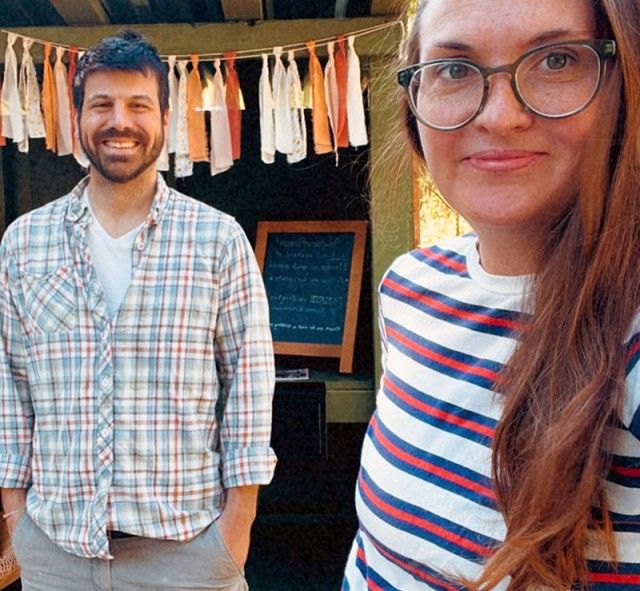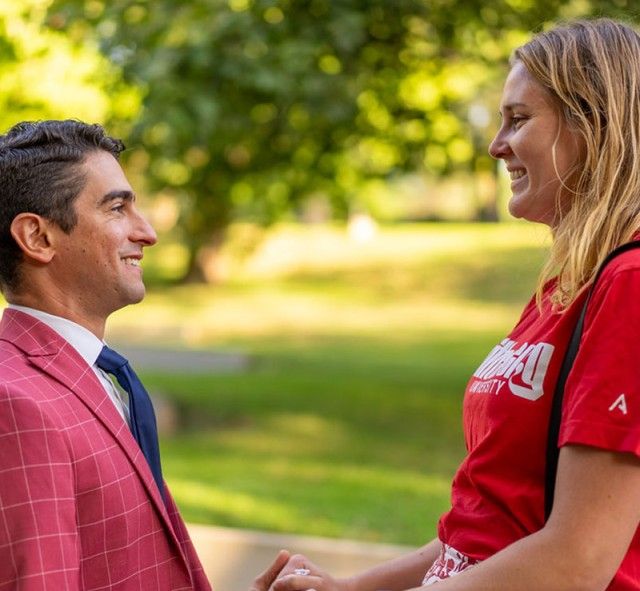Want to explore, but stuck inside because of the COVID pandemic? Thanks to Wittenberg connections and an inspiring professor, a new card game called Gone Caving! might be the answer to adventure.
Designed for two-to-six people in which players of all ages explore a cave, the game pays tribute to the late, nationally recognized caving expert, Horton Hobbs III, professor emeritus of biology.
"The groundwork started about two years after Horton Hobbs died. The idea of a caving-related game seemed like a great way to honor his memory,” said Ken Irwin, former Wittenberg reference librarian and assistant professor who worked at the University from 1998-2019 and had a hand in creating the game that consists of 104 cards.
For the game, every player is on a cave trip with the object being to draw cards to find a cave entrance, explore cave passages, overcome challenges, and exit the cave safely. Along the journey, players discover interesting animals and cave formations while avoiding some of the impediments that can slow down a cave trip such as deep water, steep passages, or needing to stop and clean up someone else's litter. Players score points by tallying the lengths of cave passages explored, receive bonus points for specializing in one or more areas of cave research such as geology, biology, or cartography, and deduct points for unplayed passage cards. On each turn, a player draws a card and plays or discards a card.
“One of the game mechanics we envisioned was the creation of ‘hero’ cards -- experts in some caving discipline. We knew right away that we'd need a biologist hero card, and that image on the card would be a handsome older fellow with a red cave suit, glasses, and a prominent mustache,” Irwin said.
During his tenure at Wittenberg, Hobbs served as chair of the department of biology, authored more than 225 professional articles, delivered more than 100 professional papers, and founded the Caving Club in 1977, which later became the Wittenberg University Speleological Society (WUSS).
When Hobbs retired in 2012, the group needed a new advisor, and students from the group approached Irwin, who accepted. Irwin met Jared Embree, who started at Wittenberg the same time he did. Embree, Wittenberg class of 2002, and Irwin had common interests and became friends along with the other creators of the game. A team of six in all including Irwin, Embree, Jeremy Trim, Megan Gaskin, Beth Kuhnell, and Tracey Obenour-Verbeke loved playing card and board games.
“The game’s mechanics were inspired by the card games like ‘Touring’ and ‘Mille Borne’. Other games in the genre had added new twists and turns, introducing new challenges and new themes,” Irwin said. “So, it seemed reasonable to add a few new ideas of our own and create a caving-themed game. I think the thing that spurred us to really move forward with creating the game was Jared's idea of making the game as a fundraiser for the National Speleological Society (NSS). It gave us a greater sense of purpose. The NSS promotes cave conservation, access, and safety, and is the parent organization to which WUSS belongs. By teaming up with the NSS, our project gained visibility, and in turn, the bulk of our proceeds go to support an organization we care about.”
Once they got through the first round of game development, they play-tested Gone Caving! with games and cavers alike. Playing with devoted gamers helped them refine the mechanics of the game and think through the game's theme.
“We tried the game out in virtual reality about two years ago because we didn’t have any money to develop it traditionally,” said Embree, who majored in sociology at Wittenberg, earned his master’s in behavioral science from Wright State University (WSU) in 2010, and is currently working on his doctorate of education in organizational studies at WSU where he has worked at the school’s Boonshoft School of Medicine for the past 12 years. He was, of course, part of the Caving Club at Wittenberg and one of the founding members of the Gay Straight Alliance.
“After we did all the development, we decided it was fun,” Embree continued. “We had made it enjoyable, but not pretty, so we had to find an artist. We reached out to the Greater Cincinnati Grotto, a caving organization in Cincinnati, and it paid for the illustrations and the illustration work. It took about a year to do it, but now it is aesthetically pleasing and correct, like it’s really supposed to look. The point of the game is to teach younger people about caving through accurate depictions of animals and formations. We also made the characters more diverse using a cross-section of people and occupations so everyone can see themselves in the game.”
Embree became more seriously involved in caving when he came to Wittenberg and had a couple of classes with Hobbs.
“He introduced hundreds of people to biology and caving,” he said. “I was a sociology major so there was no reason for me to do research in caves, but I took it up as a hobby and volunteered to do research every chance I could. I found the people connected with it there, and I haven’t left it. I give all the credit to Dr. Hobbs. He just had this great way of connecting with students and making everyone feel like he was interested in them. He introduced so many to speleology and that’s what drew us into making the card game.”
Putting a game together is a lot of work, and Irwin said they have a pretty great team that pulled it off.
“Jared was always the driving force, the primary idea-generator, and the most experienced caver in the group,” he said. “I was involved in a lot of the information-organizing efforts, of which there were many. Also involved were a graphic designer, an artist, a public relations specialist, a lawyer, and a gamer/virtual-reality developer who helped us do some of our play-testing in VR before we ever had real cards to play with. Beyond the core team, multiple intersecting herds of friends and communities helped bring the game into being.”
More than 1,000 copies of the game are printed with circulation now the goal. Gone Caving! will be available for sale online through the NSS bookstore, and the goal is to sell it in national parks and gifts shop. Carter Cave State Park, Carter City, Kentucky, will be the first park to sell it as the crew all went caving there for the first time. They hope to release an expansion pack next year featuring more cards honoring important figures in the caving community.
“It's easy to learn, but not too simple to be fun, while educating the players,” Embree said. “We are absolutely happy with it. We stop and look at each other and say ‘wow,’ we really did that!”
For more information about Gone Caving!, visit www.gonecaving.com.











